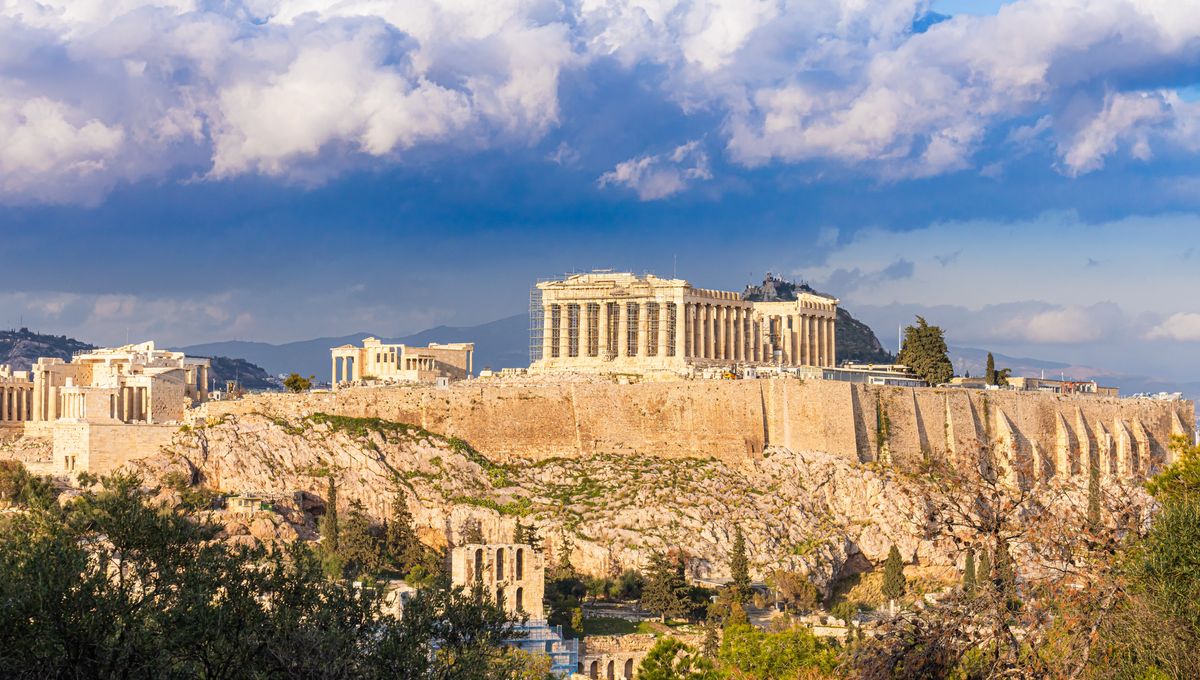
Archaeologists have found a rock engraving 20 kilometers (12 miles) from Athens depicting what appears to be an unknown temple that stood where the famous Parthenon is now found. The graffito is at least 50 years older than the Parthenon and uses a term that had confused archaeologists for a while: Hekatompedon.
As translations go, Hekatompedon is quite straightforward: the 100-foot (30-meter) building. It had been found in decrees dating from the time before the Persian attack and the building of the Parthenon, 480 and 450 BCE respectively. One decree hints at treasure storage of some sort, and archaeologists have debated if this was a temple or maybe an open courtyard with treasuries over the Acropolis.
The graffito is signed by Mikon, who’s believed to have been a shepherd in the location that is now known as Vari. The carving shows not only his name and the word Hekatompedon, but also a drawing of a temple.
“The newly published graffito of Mikon’s drawing is significant. If Mikon called his drawn temple a Hekatompedon, then it is likely that the term Hekatompedon in the decree referred to a temple too. Indeed, the Parthenon that stands on the hill today was once called the Hekatompedon,” co-author Janric van Rookhuijzen, from Radboud University, wrote in an article in The Conversation.
There are over 2,000 pieces of graffiti found in that location made by shepherds and goatherds that had been studied by lead author Merle Langdon from the University of Tennessee. The team worked out that Mikon’s doodle of the temple could not possibly be the Parthenon we can still see today in Greece (minus the marbles stolen by the British).
The key to that is in the alphabet used; Mikon had used a very ancient script, which suggests that it was doodled during the 6th century BCE.
“The inscription is also significant because it shows that, contrary to what is normally thought, shepherds could read and write, even at this early date when literacy in the Greek world was still spreading. Why the shepherds produced so many graffiti is not known – it may have simply been a form of escapism during the dull moments of their job,” van Rookhuijzen explained.
The team suggests two possible known temples that existed between 130 and 75 years before the first of the Parthenon was laid; one is the so-called Bluebeard Temple and the other is the Gigantomachy Temple. The researchers decided to refrain from picking between the two due to more uncertainties on the history of the ancient Acropolis.
A paper discussing this graffito and its significance for ancient Athens is published in the American Journal of Archaeology.
Source Link: Shepherd’s Graffiti Suggests An Ancient Temple Once Existed Where The Parthenon Now Stands